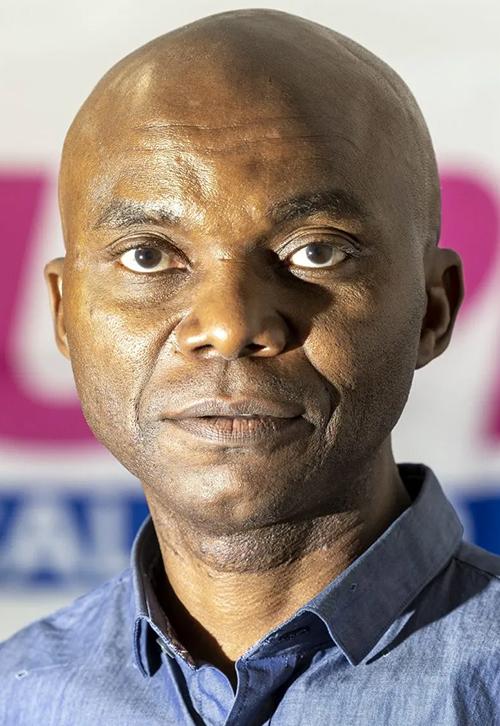In Canada, Shortage of Medical Laboratory Technologists and Radiology Technicians Continues to Delay Care
Insights learned from Canada’s experience may benefit clinical laboratories and anatomic pathology groups in the US as well
Canada continues to face a severe shortage of skilled healthcare professionals, especially among medical laboratory technologists (MLTs) and radiology technicians (RTs). According to the Canadian Society for Medical Laboratory Science (CSMLS), “In 2010, the Canadian Institute for Health Information (CIHI) identified that approximately half of all MLTs would be eligible to retire in 10 years, with the greatest impact felt in Canada’s rural and remote communities.” Today, “This staffing concern is currently affecting the professional community across all provinces and territories resulting in the decrease of workers, dramatically impacting organizations and their employees.”
One thing true of government-run healthcare programs is that they consistently underinvest in building new facilities, upgrading older facilities, and training/retaining enough physicians, nurses, and clinical laboratory/radiology workers. This is seen in the UK, Canada, New Zealand, and Australia, where varies combinations of facility, physician, and other healthcare professional shortages generate regular headlines about patient wait times—particularly for elective procedures—that may be six months to a year or more.
For example, officials at Pasqua Hospital in Regina, which serves patients in southern Saskatchewan, Canada, say diagnostics services may need to be shut down by the end of January as a result of “extended, chronic staffing shortages.”
“We’re barely struggling to keep up with urgent cases,” Christy Labreche, a nuclear medicine technologist told the Regina-Leader Post, which noted that people requesting non-urgent treatment may need to make appointments six to 12 weeks out.
More than 1,500 Saskatchewan residents have been waiting for more than 90 days for computerized tomography (CT) scans, according to the Canadian Union of Public Employees (CUPE).
Pasqua Hospital leaders have asked province officials to take “immediate action,” but they feel their concerns are “falling on deaf ears,” the Leader Post reported.

“For over a decade, we have been sounding the alarm on behalf of our members that provide a vital service in the continuum of care,” said nuclear medicine technologist Bashir Jalloh (above) in a CUPE statement. Jalloh is President of CUPE 5430, Saskatchewan’s largest healthcare union which represents medical technologists in a variety of specialties. “Now, as waitlists grow, we are at risk of more disruptions of services and communities on bypass for critical care at a time when wait lists are as long as ever.” Clinical laboratory leaders in the US can gain valuable insights from the struggle with shortages taking place in Canada. (Photo copyright: Regina-Leader Post.)
MLT Needs Beyond Saskatchewan
The Canadian Alliance of Medical Laboratory Professionals Regulators (CAMLPR) is working with government authorities on the current and projected countrywide shortage of medical laboratory professionals.
In an article he penned for Today’s Clinical Lab, Adam Chrobak, BSc, MBA, MLT, Registrar/CEO of the College of Medical Laboratory Technologists of Manitoba, and Vice-Chair of the CAMLPR, noted that about 25,600 new medical laboratory jobs will open up by 2031. He pointed out, however, that only about 20,400 people (20% less than what is needed) are expected to pursue those lab jobs, according to employment data from Employment and Social Development Canada, an agency of the Canadian government.
Chrobak noted the following reasons for the deficit of MLTs in Canada:
- An aging workforce: Many current lab scientists are over age 50, signaling a “potential shortage of medical laboratory technologists when seasoned professionals retire.”
- Lack of awareness and representation: Other healthcare fields may benefit by being in the public spotlight, while “opportunities and rewards” of a medical lab technology career may not be apparent to job seekers.
- Insufficient funding for educational programs: The need for laboratory professionals may supersede “scarce healthcare dollars that fund education programs.”
- Barriers to registration: International applicants may be challenged in “recognition of existing field-of-practice competencies.”
Solutions: Improve Recruitment, Retention
To address the MLT shortages across Canada, CAMLPR aims to step up the registration of people interested in the medical laboratory profession through a project in partnership with the Canadian government called the Flexible Pathways to Registration for Medical Laboratory Technologists. The goal is to develop competency standards for entering the profession, ease the registration process, and increase the supply of qualified health professionals in Canada, according to a news release.
This is not the first time Dark Daily has covered Canada’s lab worker shortages.
In “Clinical Laboratories Suffer During the ‘Great Resignation’,” we reported how the so-called “Great Resignation” caused by the COVID-19 pandemic has had a severe impact on clinical laboratory staffs, creating shortages of pathologists as well as of medical technologists, medical laboratory technicians, and other lab scientists who are vital to clinical laboratories in both Canada and the US.
And in “Lab Staffing Shortages Reaching Dire Levels,” Dark Daily’s sister publication, The Dark Report, noted that CAP Today characterized the current lab staffing shortage as going “from simmer to rolling boil” and that demand for medical technologists and other certified laboratory scientists far exceeds the available supply. Consequently, many labs use overtime and temp workers to handle daily testing, a strategy that has led to staff burnout and a high turnover rate.
Shortages in other areas of Canadian healthcare are on the rise as well, which we covered in “Number of Unfilled Medical Residencies Increases in Alberta and Other Areas of Canada.” We reported that, according to the Angus Reid Institute, approximately half of all Canadians cannot find a doctor or get a timely appointment with their current doctor. And that, just like in many parts of America, certain provinces are experiencing severe medical staffing shortages that includes clinical laboratories and pathology groups.
Global Insights May Offer Ideas
Dark Daily’s coverage of healthcare industry challenges in Canada, the US, and other countries is aimed at helping clinical laboratory managers and pathologists understand challenges faced by government-run healthcare systems, where there is constant pressure on the government to provide adequate funding. Capital is needed to modernize and expand hospitals and clinics. At the same time, there is need to expand training opportunities to solve the shortage of clinical laboratory scientists, medical laboratory and imaging technologists, doctors, nurses, and other medical professionals.
The insights gained by studying these healthcare systems may be of value to US-based hospitals and medical laboratories that face their own worker recruitment and retention issues.
—Donna Marie Pocius
Related Information:
Pasqua Hospital Imaging Techs Say Shutdown Imminent Due to Staffing Shortfall
Critical Shortage of Radiological Technologists in Saskatchewan Risks Patient Care
Reduction of Lab and X-ray Services in La Ronge Due to Crisis in Staffing
Saskatchewan Announces $6.9 Billion Healthcare Budget for 2023-24
Solving the Shortage of Medical Laboratory Technologists in Canada
Flexible Pathways to Registration for Medical Laboratory Technologists
Clinical Laboratories Suffer During the ‘Great Resignation’
Lab Staffing Shortages Reaching Dire Levels
Number of Unfilled Medical Residencies Increases in Alberta and Other Areas of Canada




